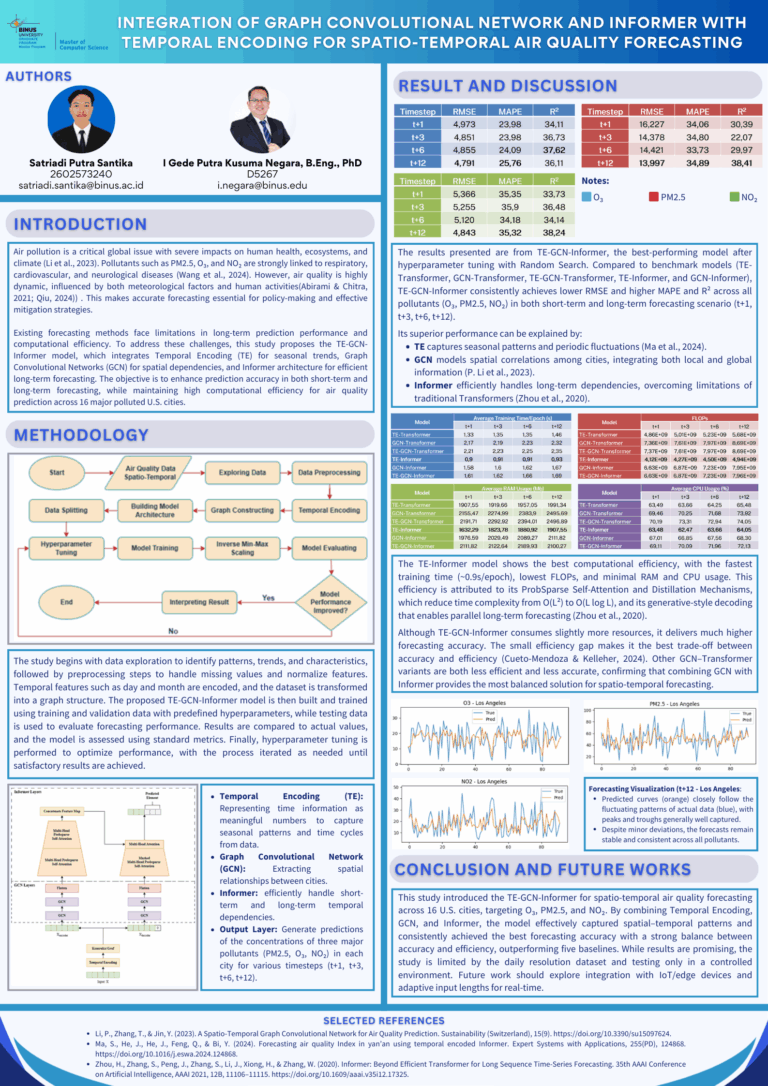Integration of Graph Convolutional Network and Informer with Temporal Encoding for Spatio-Temporal Air Quality Forecasting
Air quality is one of the most critical environmental issues due to its significant impact on human health and the environment. One possible approach to address this problem is forecasting, which plays an important role in mitigating the effects of pollution by predicting future pollutant concentrations. This study proposes the TE-GCN-Informer model, which combines Temporal Encoding, Graph Convolutional Network (GCN), and Informer to perform spatio-temporal forecasting of three major pollutants (PM2.5, O₃, and NO₂) across 16 cities in the United States. The main contribution of this research lies in integrating seasonal, spatial, and temporal representations into a unified theoretical framework, thereby extending the understanding of how these three aspects can be effectively combined to enhance forecast performance while maintaining computational efficiency. The dataset consists of daily air pollution data from January 1, 2019, to December 11, 2020, along with additional features including pollutants, meteorological variables, population, and traffic. Experiments were conducted on four forecasting scenarios, namely t+1, t+3, t+6, and t+12, using RMSE, MAPE, and R² as evaluation metrics. The results show that TE-GCN-Informer consistently outperforms other baseline models in both short-term and long-term forecasting. The model produces lower errors and higher forecasting performance in almost all scenarios. In addition to forecasting performance, computational efficiency was also analyzed through training time, FLOPs, RAM usage, and CPU consumption. The results demonstrate that the proposed model is more efficient than Transformer-based models. Overall, TE-GCN-Informer proves to be an accurate and efficient approach for both short-term and long-term air quality forecasting



